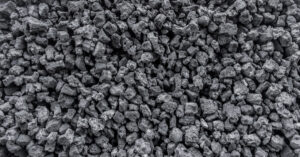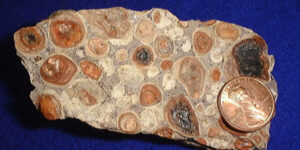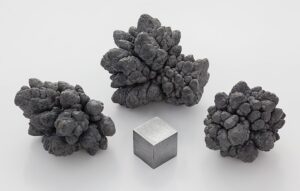
In January-March this year, Ukraine increased imports of coke and semi-coke in physical terms by 90.3% year-on-year to 212,366 thousand tons from 111,600 thousand tons.
According to statistics released by the State Customs Service (SCS) on Tuesday, coke imports in monetary terms increased by 59.2% to $68.025 million during this period. It was imported mainly from Poland (84% of supplies in monetary terms), Indonesia (14.06%) and the Czech Republic (1.92%).
Ukraine did not export coke in the period under review.
As reported, Metinvest suspended the Pokrovske Coal Group in January this year due to changes in the situation on the frontline, electricity shortages and the deteriorating security situation.
Last year, Ukraine increased imports of coke and semi-coke in physical terms by 2.01 times compared to 2023, to 661.487 thousand tons, mainly from Poland (84.76% of supplies in monetary terms), Colombia (7.74%) and Hungary (2.69%). In monetary terms, imports increased by 81.9% to $235.475 million.
In 2024, the country exported 1,601 thousand tons of 84.76% coke for $368 thousand to Moldova (99.18%) and Latvia (0.82%), while in January, March, October and November 2024, there were no exports, while in 2023, exports amounted to 3,383 thousand tons for $787 thousand.

In January-March this year, Ukraine increased imports of aluminum ore and concentrate (bauxite) in physical terms compared to the same period last year – up to 8.219 thousand tons from 123 tons.
According to statistics released by the State Customs Service (SCS) on Tuesday, bauxite imports in monetary terms increased 8.6 times during this period, to $891 thousand from $104 thousand.
At the same time, imports were carried out mainly from Turkey (81.37% of supplies in monetary terms) and China (18.63%).
Ukraine did not re-export bauxite in 2025, as well as in 2024 and 2023.
As reported, in 2024, Ukraine increased imports of bauxite in physical terms by 77.4% compared to the previous year – up to 35.173 thousand tons, in monetary terms – by 74% – up to $4.107 million. Imports were carried out mainly from Turkey (78.48% of supplies in monetary terms), China (19.48%) and Spain (1.9%).
In 2023, Ukraine imported 19,830 thousand tons of bauxite for $2.360 million.
In 2022, Ukraine reduced imports of aluminum ore and concentrate (bauxite) in physical terms by 81.5% year-on-year to 945,396 thousand tons. Imports of bauxite in monetary terms decreased by 79.6% to $48.166 million. Imports were mainly from Guinea (58.90% of supplies in monetary terms), Brazil (27.19%) and Ghana (7.48%).
Bauxite is an aluminum ore that is used as a raw material to produce alumina, which is used to make aluminum. They are also used as fluxes in ferrous metallurgy.
Mykolaiv Alumina Plant (MAP) imports bauxite to Ukraine.

In March, Ukraine increased electricity exports by 131% to 76.3 thousand MWh, while imports increased by 11% to 272.3 thousand MWh, Ukrainian energy and climate think tank DiXi Group reported citing Energy map.
According to its information, half of electricity exports went to Hungary – 38.1 thousand MWh. Another 17.8 thousand MWh, which amounted to 23% of total exports, went to Moldova, 11.1 thousand MWh (15%) to Romania, 8.4 thousand MWh (11%) to Slovakia, and 1 thousand MWh (1%) to Poland.
At the same time, it is noted that compared to March-2024, exports fell by half – then it amounted to 154.1 thousand MWh.
According to DiXi Group experts, out of 272.3 thousand MWh of imports, the largest share came from Hungary – 113.8 thousand MWh (42%). Another 52.7 thousand MWh (19%) came from Slovakia, 48.1 thousand MWh (18%) from Poland, 44.6 thousand MWh (16%) from Romania, and 13.2 thousand MWh (5%) from Moldova.
Compared to March 2014, when imports amounted to 168.3 thousand MWh, its figures in March 2015 increased by 1.6 times.
The increase in purchases was recorded from almost all available directions (from 4% to 480%), except for Slovakia – the volume of imports from this country decreased by 28%.
In total, in March, the volume of imports was almost 4 times higher than exports, DiXi Group notes.
As reported, in February 2025, Ukraine increased electricity imports by 33% to 244.2 thousand MWh compared to January and reduced exports by 61% to 33.1 thousand MWh.

Supplies of lead and lead products to Ukraine in January-February 2025 increased 8.7 times to $1.228 million. In February alone, lead was imported for $647 thousand. At the same time, lead exports decreased by 23.4% to $1.346 million.
Lead is currently mainly used in the production of lead-acid batteries for the automotive industry. In addition, lead is used to make bullets and some alloys.

Norway is providing an additional NOK1 billion ($95 million) to finance gas imports to Ukraine to ensure adequate supplies for households, businesses and industry in the country, the Norwegian government said on Wednesday.
“A more secure energy supply is essential for Ukraine’s resilience. This was one of the topics discussed during President Zelensky’s visit to Norway last week. There is an urgent need to increase funding for gas imports to provide electricity and heating for homes, businesses and public institutions. Norway is doing its part to meet this need,” said Prime Minister Jonas Gahr Støre.
The new financing will be channelled through the European Bank for Reconstruction and Development (EBRD) and will be used to purchase gas from Western sources. The recipient of the gas will be the Ukrainian state-owned company Naftogaz. The imported gas will be used to meet consumption needs and increase gas reserves in case of further attacks on gas infrastructure. The financing is provided under the Nansen Support Program for Ukraine, and NOK1 billion is taken from the 2025 energy sector allocation for Ukraine.
“Access to electricity is essential to ensure the security of the Ukrainian people and to ensure the continued functioning of society. The attacks on Ukraine’s energy supply are and have been an attack on the very core of Ukrainian society. They are part of an attempt to weaken the Ukrainian economy and undermine the confidence of the Ukrainian people in their government. That is why it is crucial and strategic to help preserve access to gas,” said Foreign Minister Espen Barth Eide, who is visiting Ukraine this week.
The additional allocation will bring Norway’s total contribution to Ukraine’s gas purchases from 2022 to NOK3.6 billion ($342 million). In 2023, NOK635 million was allocated for gas purchases. The funds have already been released and can be used to increase the total contribution. Thus, the total amount of the agreement is NOK1.635 billion ($155 million).
“We don’t know yet how much gas Ukraine will need to import this year, but Norway’s contribution will enable Ukraine to better cope with the consequences of new attacks from Russia and make the necessary preparations for next winter,” Eide said.
The EBRD has been cooperating with Naftogaz for several years, in particular on corporate governance. Channelling funds through the EBRD helps to reduce risks, such as the risk of corruption and financial irregularities, the statement said.
As reported, Ukrainian Prime Minister Denys Shmyhal on Wednesday discussed joint humanitarian programs and sanctions against Russia with Norwegian Foreign Minister Espen Barth Eide and Norwegian Minister of Labor and Social Inclusion Tonje Brenna. The prime minister also thanked Norway for its assistance in the energy sector, in particular for its readiness to make a EUR140 million contribution through the EBRD for the purchase of gas for Ukrainian gas storage facilities.

Ukraine needs to import 4.5-4.6 billion cubic meters of natural gas by November 1 of this year before the start of the next heating season.
This was announced by Dmytro Abramovich, a member of the Board and Commercial Director of Naftogaz Group, at a meeting of the Verkhovna Rada Committee on Energy, Housing and Utilities on Wednesday.
“Naftogaz is already contracting for April, May and the following months, we are not stopping, realizing that by November 1 of this year, if we want to reach the balance sheet indicators comparable to last year, we need 4.5-4.6 billion cubic meters of gas,” he said.
According to the commercial director, Naftogaz has already imported almost 800 million cubic meters of gas in February-March this year.
“This is a technological import, because it cannot be said to be for final consumption – another resource is commercially consumed – but this resource was necessary for balancing the system and daily withdrawal,” Abramovich explained.
According to the company, Ukrainian consumers consumed 14.86 billion cubic meters during the heating period in November-March 2024-25, while the balance plan of the Ministry of Energy of Ukraine was 14.73 billion cubic meters. At the same time, the level of consumption was 680 million cubic meters or 5% higher than in the same period in 2023-24.
According to the commercial director, during the last heating season, Ukraine also lost 700 million cubic meters of its own gas production as a result of Russian shelling.
“We lost almost 700 million cubic meters of gas during the heating season for obvious reasons. Until February 1, we were doing better than planned according to the country’s balance sheet, but the shelling happened and we lost a very large part of production,” he said.
According to Abramovich, Ukraine is also planning to reach 500 million cubic meters less gas reserves in underground gas storage facilities (UGS) during the current heating season than planned in the balance sheet.
At the same time, gas consumption in 2025 in the country will be comparable to last year and will amount to 20.6-20.8 billion cubic meters.
“We see this in the trend, in the current consumption dynamics, so the main task is to work on energy saving and on the restoration of production and continue imports,” summarized the commercial director.
As reported with reference to Prime Minister Denys Shmyhal, the European Bank for Reconstruction and Development (EBRD) on Wednesday approved a loan for Naftogaz of Ukraine for the purchase of natural gas for the next two heating seasons in the amount of up to EUR270 million. Additionally, about EUR140 million in grants from the Norwegian government will be channelled through the EBRD.
According to Shmyhal, this resource will help Ukraine accumulate gas reserves in underground storage facilities for the next heating season.